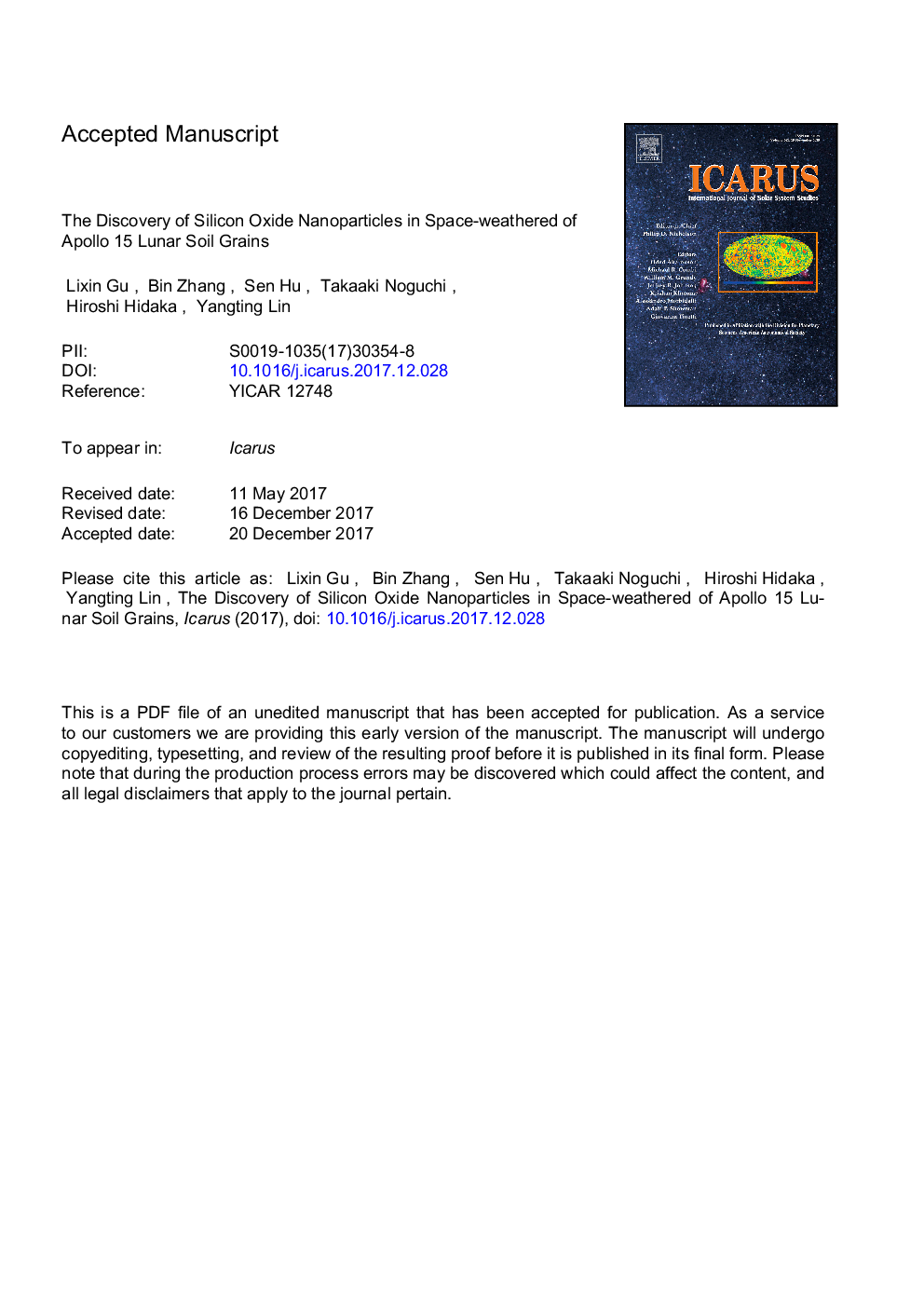| Article ID | Journal | Published Year | Pages | File Type |
|---|---|---|---|---|
| 8134405 | Icarus | 2018 | 19 Pages |
Abstract
Space weathering is an important process on the Moon and other airless celestial bodies. The most common space weathering effects are amorphization of the top surface of soil grains and formation of nanophase iron particles (npFe) within the partially amorphous rims. Hence, space weathering significantly affects optical properties of the surface of the Moon and other airless celestial bodies. Transmission electron microscope (TEM) analysis of Apollo 15 soil grains displays npFe (â¤5â¯nm in size) embedded in the space-weathered rim (â¼60â¯nm in thickness) of a pyroxene grain, consistent with previous studies. In contrast, submicron-sized fragments that adhere to the pyroxene grain show distinct space weathering features. Silicon oxide nanoparticles (npSiOx) were observed with npFe in a submicron-sized Mg-Fe silicate fragment. This is the first discovery of npSiOx as a product of space weathering. The npSiOx and the coexisting npFe are â¼10-25â¯nm in size, significantly larger than the typical npFe in the space weathered rim of the pyroxene grain. The coexisting npSiOx and npFe were probably formed directly in micrometeorite shock-induced melt, instead of in a solar-wind generated vapor deposit or irradiated rim. This new observation will shed light on space weathering processes on the Moon and airless celestial bodies.
Keywords
Related Topics
Physical Sciences and Engineering
Earth and Planetary Sciences
Space and Planetary Science
Authors
Lixin Gu, Bin Zhang, Sen Hu, Takaaki Noguchi, Hiroshi Hidaka, Yangting Lin,
